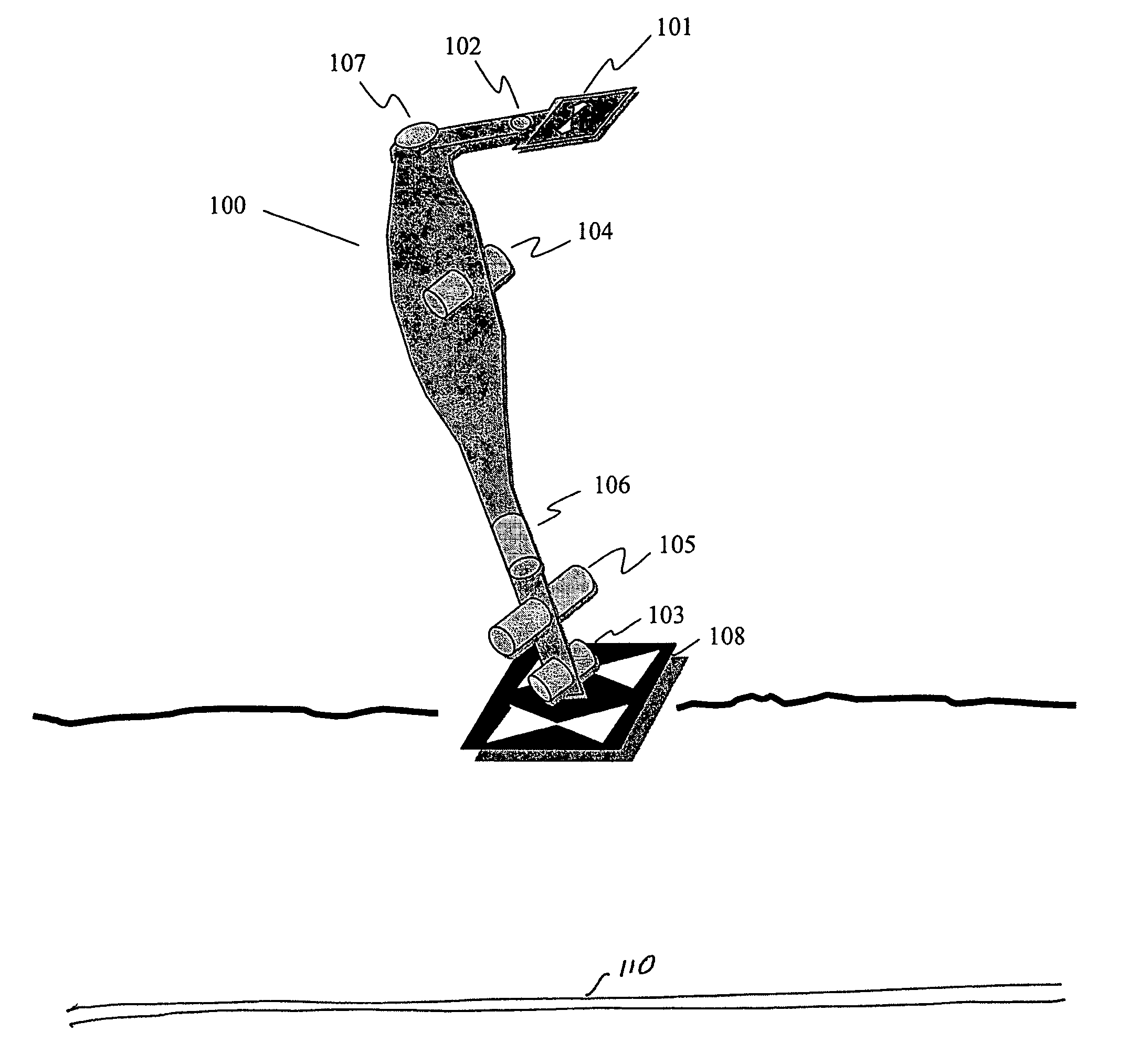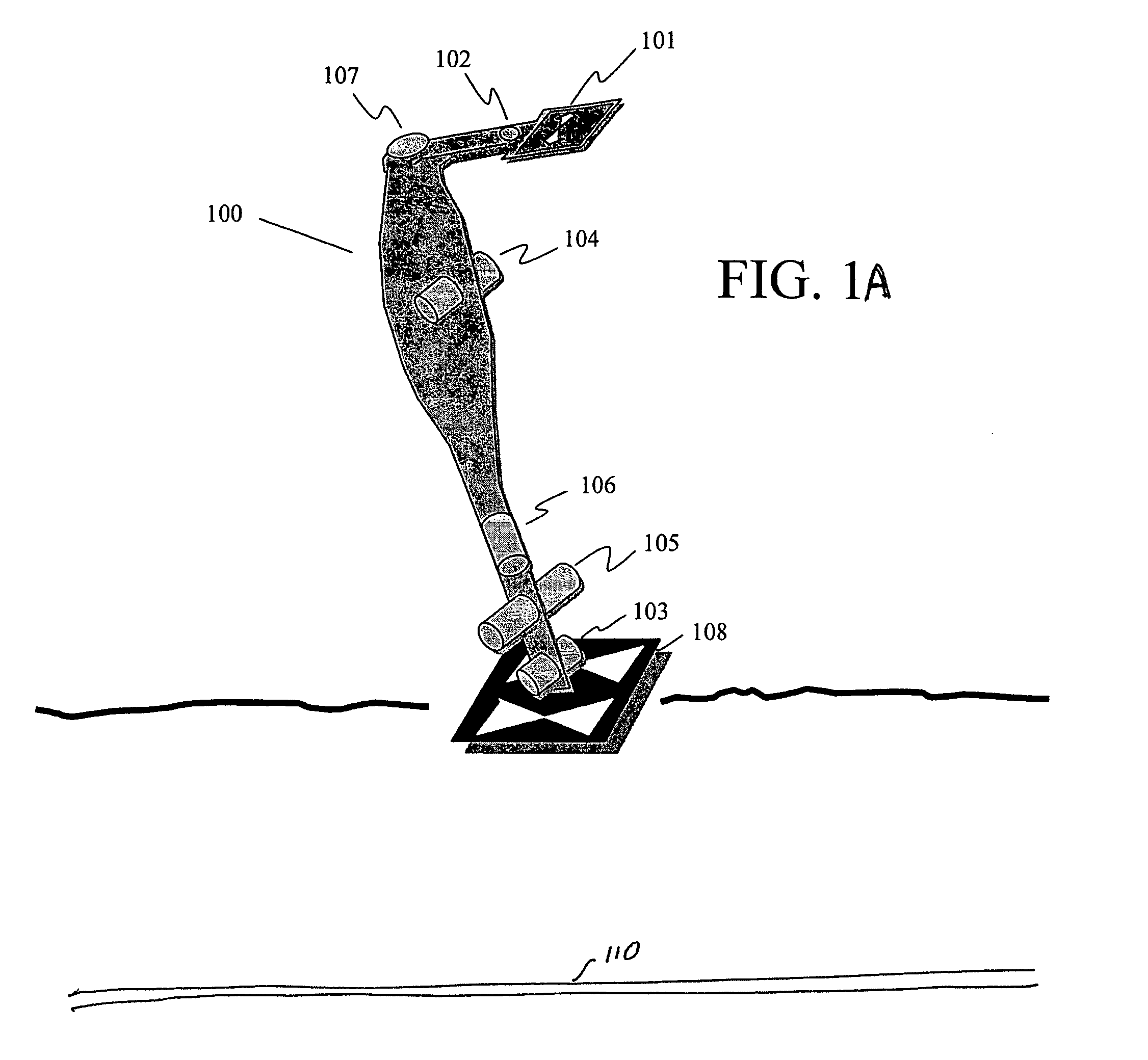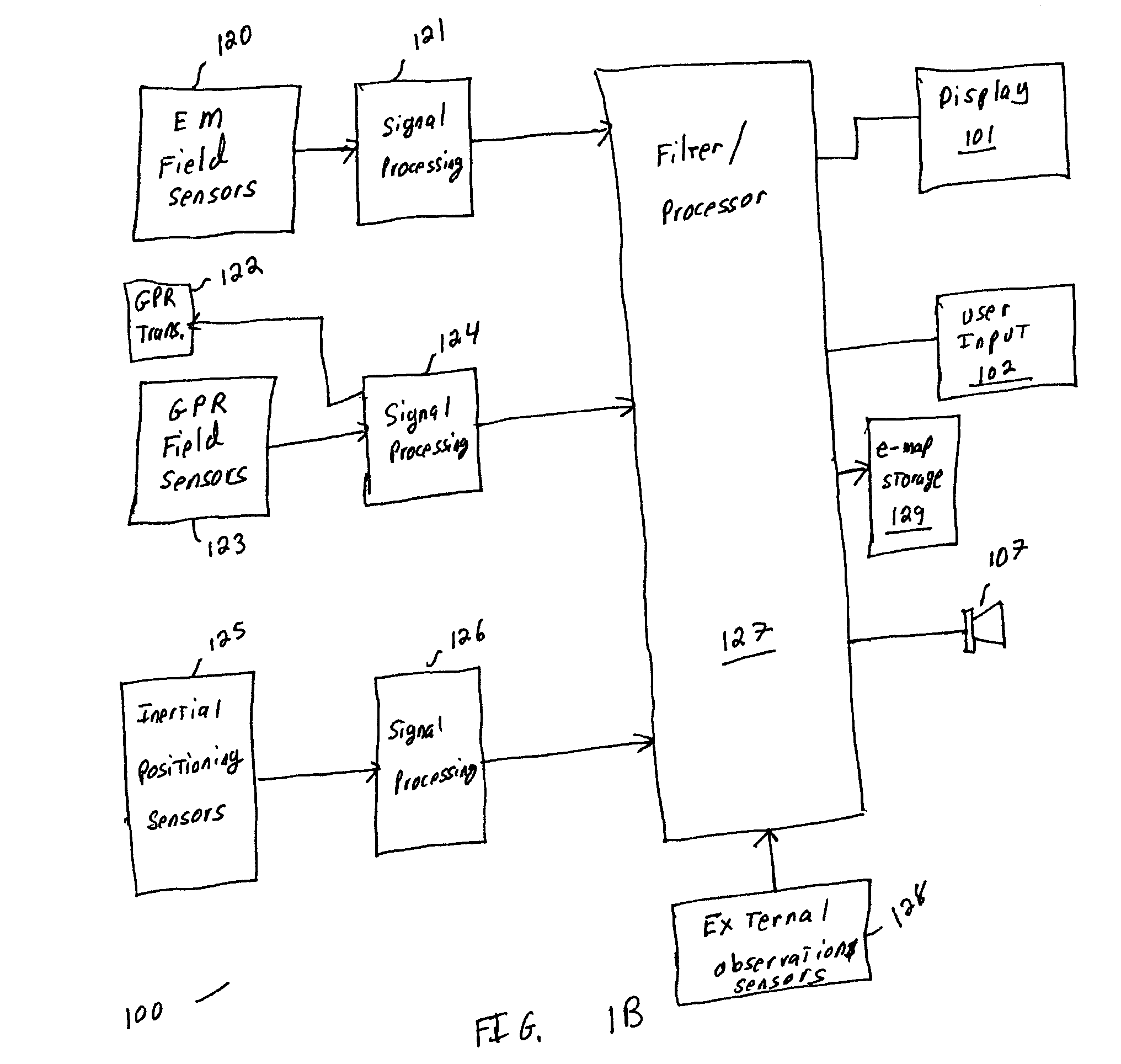Sensor fusion for model-based detection in pipe and cable locator systems
a technology of sensor fusion and model-based detection, which is applied in the direction of instruments, detection using electromagnetic waves, and reradiation, etc., can solve the problems of difficult interpretation of the typically graphical output of such systems, limited wide-spread use of gpr, and complex problems, so as to improve the position estimation of targeted hidden conductors
- Summary
- Abstract
- Description
- Claims
- Application Information
AI Technical Summary
Benefits of technology
Problems solved by technology
Method used
Image
Examples
Embodiment Construction
[0041] Various methods have been employed on EM locators to ensure that the results presented to the user (depth, centerline, and AC current) associated with the target conductor are accurate. The traditional rule of thumb is that the peak field measurement of the center of the line, determined by detectors arranged to measure horizontal fields, and the null field measurement of the center of the line, determined by detectors arranged to measure vertical fields, should not differ by more than a couple of centimeters or so. If those measurements differ by more than this threshold, the field is distorted and the predicted centerline could be in error. U.S. Pat. No. 6,815,953, (the '953 patent) by Russell N. Bigelow, and assigned to Metrotech Corporation, which is herein incorporated by reference in its entirety, discloses a method of comparing three point measurements in space and determining an error function based on how well the measured magnetic field conforms to the assumed model...
PUM
 Login to View More
Login to View More Abstract
Description
Claims
Application Information
 Login to View More
Login to View More - R&D
- Intellectual Property
- Life Sciences
- Materials
- Tech Scout
- Unparalleled Data Quality
- Higher Quality Content
- 60% Fewer Hallucinations
Browse by: Latest US Patents, China's latest patents, Technical Efficacy Thesaurus, Application Domain, Technology Topic, Popular Technical Reports.
© 2025 PatSnap. All rights reserved.Legal|Privacy policy|Modern Slavery Act Transparency Statement|Sitemap|About US| Contact US: help@patsnap.com



